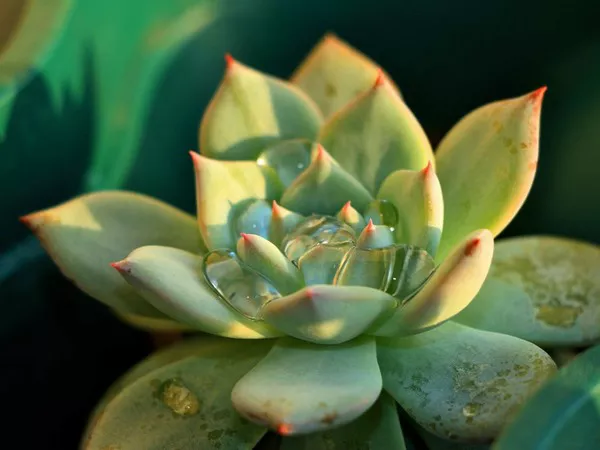Succulents have gained immense popularity in recent years, thanks to their unique charm and low-maintenance nature. Whether you’re a seasoned plant enthusiast or a budding green thumb, understanding what you need for succulents is crucial for their thriving growth.
Choosing the Right Succulents
The first step in creating a thriving succulent garden is selecting the right plants for your environment. Succulents come in a vast array of shapes, sizes, and colors, each with its own unique characteristics. Consider factors such as sunlight exposure, climate, and available space when choosing your succulents. Some popular varieties include Aloe Vera, Echeveria, and Sedum. Research the specific needs of each succulent to ensure they are compatible with your gardening conditions.
Optimal Sunlight Conditions for Succulents
One of the key factors in succulent care is providing them with the right amount of sunlight. Most succulents thrive in bright, indirect light, while some can handle direct sunlight. Understanding the sunlight needs of your succulents is crucial for their overall health and vibrancy. Consider the sunlight conditions in your location and choose a suitable spot for your succulents accordingly. A south or west-facing window is often ideal for indoor succulents, while outdoor succulents may benefit from partial shade in hot climates.
Well-Draining Soil Mix for Succulents
Succulents are particularly sensitive to overwatering, making the right soil mix a critical component of their care. A well-draining soil mix is essential to prevent waterlogged roots and potential rot. You can create a suitable succulent soil mix by combining potting soil with perlite or coarse sand to enhance drainage. Alternatively, specialized cactus and succulent potting mixes are readily available and formulated to meet the unique needs of these plants. Regular garden soil is generally too dense and retains too much moisture for succulents, so be sure to choose a mix that promotes proper drainage.
Appropriate Containers for Succulents
Selecting the right containers for your succulents is another key consideration. Terracotta pots are a popular choice as they allow for breathability and moisture evaporation. Ensure that the containers have drainage holes to prevent water accumulation at the bottom, which can lead to root rot. Additionally, the size of the pot should be appropriate for the size of the succulent, providing enough space for growth without overwhelming the plant. Consider the aesthetic aspects of the containers as well, as they can add a decorative element to your succulent display.
Watering Techniques and Frequency for Succulents
Proper watering is crucial for the well-being of your succulents. While these plants are known for their ability to store water in their leaves, they still require regular hydration. The key is to avoid overwatering, as this can lead to root rot. Instead, adopt a “soak and dry” approach. Water the succulents thoroughly, allowing the soil to dry out completely before the next watering. The frequency of watering will depend on factors such as climate, season, and the specific needs of the succulents you have. Be observant and adjust your watering routine accordingly.
Fertilizing Succulents for Optimal Growth
While succulents are not heavy feeders, providing them with the right nutrients is essential for optimal growth and vibrancy. Use a balanced, water-soluble fertilizer diluted to half or a quarter of the recommended strength during the growing season, typically in spring and summer. Avoid fertilizing in the dormant winter months when succulents generally require less nutrients. Over-fertilizing can be harmful, so it’s crucial to follow the recommended guidelines and pay attention to the specific needs of your succulents.
Temperature and Humidity Considerations
Understanding the temperature and humidity requirements of your succulents is essential for creating a suitable environment. Most succulents thrive in temperatures between 60°F and 80°F (15°C to 27°C) and appreciate a drop in temperature at night. In colder climates, be mindful of frost, as many succulents are sensitive to freezing temperatures. Additionally, while succulents are known for their ability to tolerate low humidity, providing adequate ventilation can help prevent issues like fungal infections.
Pruning and Propagation Techniques
Pruning is an essential aspect of succulent care, helping to maintain their shape and encourage healthy growth. Remove dead or damaged leaves to promote air circulation and prevent the spread of diseases. Some succulents may benefit from occasional shaping to maintain a compact and attractive appearance. Moreover, succulents are known for their ability to propagate easily. Propagation methods include leaf cuttings, stem cuttings, and offsets. Experiment with propagation to expand your succulent collection and share these fascinating plants with friends and family.
Pest Control and Disease Prevention
While succulents are generally resilient, they can still be susceptible to pests and diseases. Common pests include mealybugs, aphids, and spider mites. Regularly inspect your succulents for signs of pests, such as webbing, discoloration, or distorted growth. In case of an infestation, treat the affected succulents promptly with insecticidal soap or neem oil. Additionally, proper ventilation and avoiding overwatering can prevent fungal issues, such as root rot and powdery mildew. A proactive approach to pest control and disease prevention will contribute to the overall health of your succulents.
Creative Arrangements and Display Ideas for Succulents
Beyond their practical care requirements, succulents offer endless possibilities for creative arrangements and displays. Experiment with combining different succulent varieties to create visually appealing compositions. Consider using various container shapes and sizes, or explore vertical gardens and hanging arrangements. The versatility of succulents allows for imaginative expression, making them an ideal choice for both indoor and outdoor decor.
Conclusion
Cultivating succulents can be a rewarding and enjoyable experience, provided you understand and meet their specific needs. From choosing the right succulents for your environment to ensuring proper sunlight, soil, and watering practices, each aspect plays a crucial role in their overall well-being. By embracing the unique qualities of these resilient plants and incorporating creative elements into their display, you can create a thriving succulent garden that adds beauty and tranquility to your living space. With the right knowledge and care, your journey into the world of succulents is bound to be a flourishing success.


